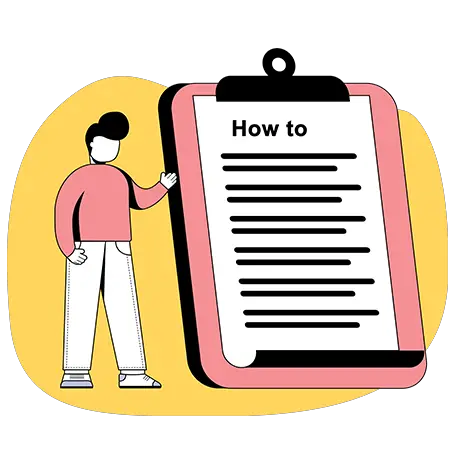Fray jeans, with their effortlessly cool and slightly rebellious vibe, have become a staple in modern fashion. Whether you’re aiming for a casual, laid-back look or a more polished, trendy ensemble, perfectly frayed jeans can elevate your style game.
Achieving that ideal frayed hem isn’t just about cutting and hoping for the best; it involves a bit of technique and creativity. In this guide, we’ll walk you through the steps to create the perfect frayed look for your jeans, ensuring they look chic and stylish every time you wear them.

Tools You’ll Need
List the essential tools required for fraying jeans.
- Scissors
- Tweezers
- Sandpaper
- Chalk or pencil
- Measuring tape
Step-by-Step Guide To Get The Perfect Frayed Look With Fray Jeans

Frayed jeans are a trendy and stylish addition to any wardrobe, offering a relaxed and effortlessly cool vibe. Here’s a step-by-step guide to achieving the perfect frayed look:
Step 1: Mark the Desired Length
Start by putting on your jeans and standing in front of a mirror to determine the length you want for your frayed hem. Use chalk or a pencil to mark the desired length on each leg. To ensure the line is straight, consider using a ruler or measuring tape. Draw a line around the entire leg at the marked point. Taking your time with this step is crucial for achieving a balanced and symmetrical look on both legs.
Step 2: Cut the Jeans

Lay your jeans flat on a sturdy surface, such as a table or a cutting board. Use sharp fabric scissors to cut along the marked line. It’s essential to make clean, even cuts to avoid jagged edges that can make the fraying process look messy. Cut slowly and steadily, ensuring you follow the line accurately. Double-check that both legs are cut to the same length for a uniform appearance.
Step 3: Loosen the Threads
With the jeans now cut to the desired length, use a pair of tweezers to gently pull out the horizontal threads from the cut edges. Start at one end and work your way around the hem, pulling out threads one by one. This process can be time-consuming, but patience and precision will pay off in the end. The goal is to expose the vertical threads, which will create the frayed effect.
Step 4: Create a Natural Look

To enhance the frayed appearance, use a piece of sandpaper to roughen the edges of the cut hem. Gently rub the sandpaper back and forth along the edges to create a more natural, worn look. You can also try other methods, such as using a seam ripper to fray the edges further or washing and drying the jeans multiple times to accelerate the fraying process. Experiment to achieve the look you desire.
Step 5: Wash and Dry
After you’ve frayed the edges to your liking, wash and dry your jeans to enhance the frayed effect. The washing process will help to loosen and soften the threads, giving them a more natural, lived-in appearance.
Use a gentle cycle and cold water to prevent the jeans from shrinking or becoming damaged. Once washed, dry the jeans on a low heat setting. To maintain the frayed look, avoid ironing the hem and consider repeating the fraying process as needed over time.
Styling Your Frayed Jeans

Frayed jeans can be dressed up or down depending on the occasion. For a casual look, pair them with a simple t-shirt and sneakers. For a more polished outfit, try a blouse and ankle boots. Accessories like belts, jewelry, and handbags can also elevate your look. Frayed jeans offer a versatile, trendy addition to any wardrobe, ensuring you’ll stand out with your unique, customized style.
Conclusion
Achieving the perfect frayed look with fray jeans involves a combination of selecting the right jeans, preparing your workspace and tools, and carefully crafting the frayed edges. Choose jeans with the appropriate fit and fabric, typically cotton or a cotton blend.
Utilize tools like scissors, tweezers, sandpaper, and a washing machine to distress the hem or other areas of the jeans. Ensure you fray the jeans gradually, checking the progress frequently to avoid overdoing it. With patience and attention to detail, you can create stylish, personalized fray jeans that add a touch of effortless cool to your wardrobe.
FAQ
1.How Do You Make Jeans Look Frayed?
To make jeans look frayed, start by selecting a pair of old jeans. Use a pair of scissors or a seam ripper to gently cut or scrape areas like the hem, pockets, or thighs. Focus on edges for a more natural look. After cutting, wash the jeans to enhance the fraying effect; the agitation will loosen the threads. You can also use sandpaper or a cheese grater for additional distressing. Finally, you can wash them again for a softer, more worn appearance.
2.How Do You Wear Frayed Edge Jeans?
To wear frayed edge jeans, choose a fitted or relaxed cut that flatters your body type. Pair them with a simple top, like a plain t-shirt or a fitted blouse, to balance the look. For footwear, opt for ankle boots, sneakers, or heels, depending on the occasion. Layer with a denim jacket or oversized cardigan for added style.
3.How To Stop Frayed Jeans Fraying More?
To stop frayed jeans from fraying more, you can use a few simple methods. First, trim any loose threads with scissors to prevent further fraying. Next, apply a fabric glue or fray check solution along the edges to seal them. Alternatively, you can sew a zigzag stitch or use a sewing machine to reinforce the edges. Ironing the area can also help flatten and secure the frayed edges.
4.Are Frayed Jeans Still In Style?
Yes, frayed jeans are still in style. They continue to be a popular fashion choice, often associated with casual, laid-back looks. Designers and brands frequently incorporate frayed hems and distressed details into their collections, maintaining their appeal across various age groups. They can be styled in numerous ways, making them versatile for different occasions.
5.How Do You Stitch Frayed Jeans?
To stitch frayed jeans, first, clean the area by trimming any loose threads. Turn the jeans inside out for easier access. Use a needle and thread that matches the color of the jeans. Make small backstitches along the frayed edges, securing the fabric together. Finish by knotting the thread securely and trimming any excess. If desired, you can apply a patch for extra reinforcement. Iron the area gently for a polished look.



